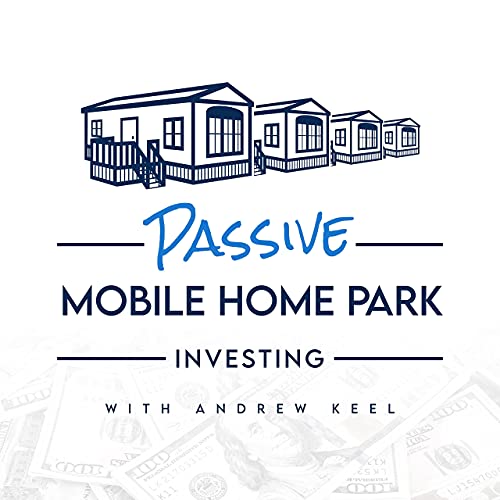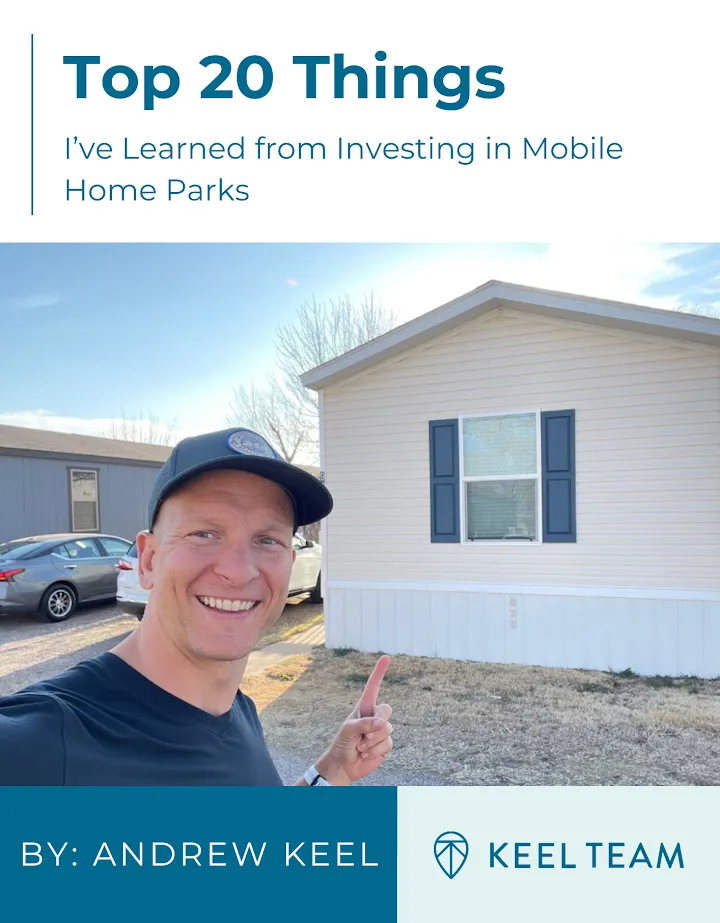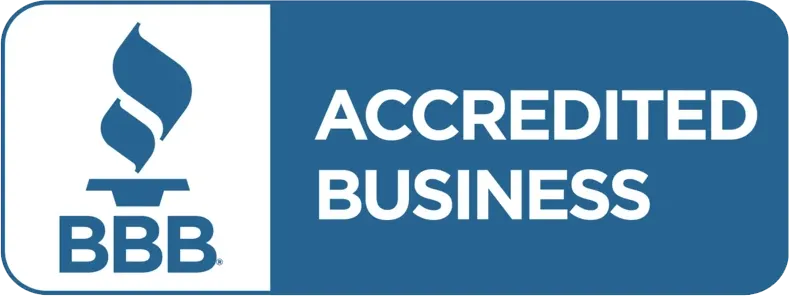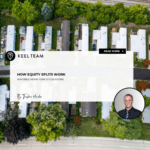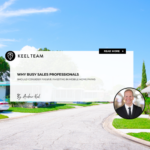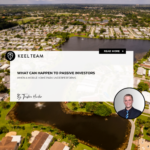What We Look for Before Acquiring a Mobile Home Park
-
 Tristan Hunter - Investor Relations
Tristan Hunter - Investor Relations
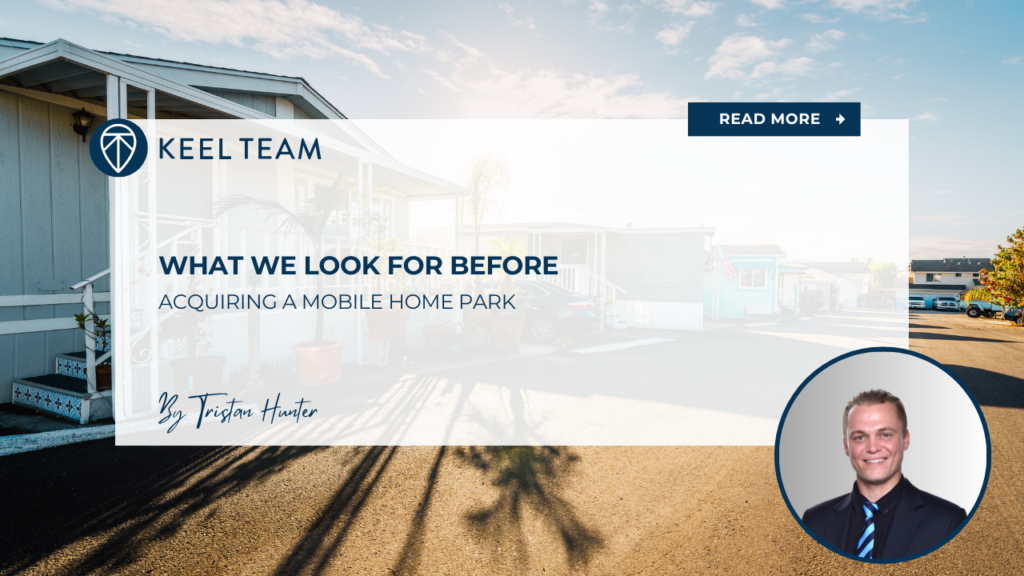
At Keel Team, we’ve reviewed thousands of mobile home park opportunities across the country. But not every mobile home park makes the cut. While every deal has its own story, we rely on a consistent set of criteria that helps us identify mobile home parks with strong fundamentals and the potential to perform over the long term.
This article outlines the core factors we typically look for before acquiring a mobile home park. These are not hard guarantees of success, but they help us filter for opportunities that align with our experience and strategy.
Proximity to Populated Metropolitan Areas
One of the first things we evaluate is the mobile home park’s proximity to a populated metropolitan statistical area (MSA). Ideally, we focus on mobile home parks located within 45 miles of an MSA with a population of at least 50,000 people.
This kind of proximity generally offers better access to jobs, schools, healthcare, and infrastructure — all key indicators of tenant demand and long-term viability. While rural areas can offer compelling deals, our approach leans toward regions with more stable population trends.
Local Median Home Price
We also take a close look at housing affordability metrics in the local market. Specifically, we prefer to invest in mobile home parks located in zip codes where the median home price exceeds $175,000.
Why does this matter? If stick-built housing becomes unaffordable for most of the working population, demand for manufactured housing often increases. Higher median home prices in a given area typically signal stronger long-term tenant demand for affordable living options like mobile home parks.
This doesn’t mean we ignore mobile home parks in more affordable areas. But when the median home price meets or exceeds that $175,000 threshold, we view it as a positive sign.
Download our FREE eBook on the Top 20 things to know BEFORE investing in mobile home parks!
Minimum Lot Count: 50+ Lots
Scale matters — both for operations and investment performance.
That’s why we usually look for mobile home parks that have at least 50 total lots. Larger mobile home parks tend to offer better economies of scale and allow us to allocate management resources more efficiently.
With 50 or more lots, we’re able to hire onsite management, optimize maintenance, and handle repairs in a cost-effective way. Smaller mobile home parks often face operational challenges that make them harder to scale over time.
Occupancy: At Least 30 Paying Residents
Lot count is important, but occupancy is just as critical. We prefer mobile home parks with at least 30 occupied lots filled with paying residents.
This level of occupancy provides a stronger base of cash flow and helps reduce risk. While turnaround opportunities exist in under-occupied mobile home parks, we typically pursue stabilized or semi-stabilized assets.
If a mobile home park has fewer than 30 occupied lots, it usually requires more capital investment, longer timelines, and more risk to bring it to full occupancy, and that’s not always the right fit for our strategy.
Public Utilities Preferred
Another key factor we assess is the type of utility infrastructure in place. We have a strong preference for mobile home parks with public utilities, such as city water and sewer.
Public utilities typically require less maintenance and regulatory compliance, making them easier to manage and underwrite. That said, we do consider mobile home parks with private utilities, such as septic systems or well water, but only at a more favorable cap rate to reflect the additional risk and potential maintenance.
Each mobile home park’s utility situation is reviewed thoroughly before any investment decision is made.

RV Lots: Minimal or None
Keel Team does not invest in RV parks, and we avoid mobile home parks with a high percentage of RV lots. Our preference is that no more than 15% of the total lots are designated as RV spaces.
Why? Most lenders do not count income from RV lots toward a mobile home park’s valuation. In addition, RV tenants are typically more transient and less reliable than residents who own their mobile homes and rent the land.
A few RV spaces in an otherwise strong mobile home park aren’t necessarily a deal-breaker, but if RV occupancy exceeds 15%, it becomes much less attractive to us.
Other Factors We Consider
While the criteria above are our core filters, we also consider additional factors such as:
- Market trends: Population growth, job creation, and rent comparables in the area.
- Road quality and layout: Paved roads and efficient layouts are a plus.
- Home ownership mix: We prefer mobile home parks where most homes are tenant-owned, not park-owned.
- Regulatory environment: Favorable zoning and landlord-tenant laws are important.
- Deferred maintenance: We evaluate the condition of roads, utility systems, and common areas.
- Expansion potential: Some mobile home parks offer room to add new lots or infill vacant ones.
All of these pieces help us paint a picture of the mobile home park’s short- and long-term potential.
Why These Criteria Matter
Mobile home park investing isn’t just about buying any available deal. It’s about buying the right deal.
By applying a consistent set of criteria, we reduce downside risk and position ourselves — and our investors — for a better outcome. That doesn’t mean every investment will go perfectly, and it certainly doesn’t guarantee returns. But it helps us focus on opportunities with solid fundamentals.
At Keel Team, we’ve completed over 50 mobile home park transactions, and our experience tells us that sticking to the fundamentals pays off over time.
Final Thoughts
Mobile home park investing continues to attract interest from passive investors seeking cash flow, stability, and diversification. But not every mobile home park is created equal.
We aim to identify mobile home parks that are well-located, appropriately priced, and have the infrastructure and occupancy to support long-term performance. While every deal is different, our criteria help guide smart acquisition decisions.
If you’re considering passive investing in mobile home parks, it helps to understand the filters that experienced operators like Keel Team use. These aren’t guarantees — just a framework to improve the odds of finding quality opportunities.
Are you looking for MORE information? Book a 1-on-1 consultation with Andrew Keel to discuss:
- A mobile home park deal review
- Due diligence questions
- How to raise capital from investors
- Mistakes to avoid, and more!
Disclaimer:
The information provided is for informational purposes only and is not investment advice or a guarantee of any kind. We do not guarantee profitability. Make investment decisions based on your research and consult registered financial and legal professionals. We are not registered financial or legal professionals and do not provide personalized investment recommendations.

Tristan Hunter - Investor Relations
View The Previous or Next Post
Subscribe Below 👇
